Hunter Greene is the star baseball needs. First he has to finish high school.

Come on downto the prettiest little ballpark in the Valley, start with the homemade guacamole or the Caesar salad off the concession stand’s vegan menu, then chase it with the frozen chocolate bananas or the artisanal ice cream sandwich, preferably ginger and salted caramel. Snag one of the 350 stadium seats behind home plate, ideally in the top row, beneath the mission arches and Spanish tiles. Don’t worry about obstructed views. The netting is of the same high quality as the kind the Dodgers use 15 miles east at Chavez Ravine. But if you ever do miss a diving catch, distracted by the kids playing pickle on the berms over each of the sunken dugouts, the portable Jumbotron occasionally stationed beyond right centerfield has you covered, as does the broadcaster providing live commentary accessible via smartphone.
Welcome to Notre Dame High in Sherman Oaks, Calif., where baseball players sport Nike-issued backpacks and cross-trainers courtesy of former Knights slugger Giancarlo Stanton, and even the freshman and JV teams lounge in their own clubhouse pondering walk-up music. Next door is the umpires’ changing room, labeled in Braille to comply with building code, where self-deprecating umps pose for selfies. The accommodations may seem extravagant for a high school until you gaze out over the shiny expanse of turf and get a load of the equally outrageous prodigy who calls this palace home.
Hunter Greene stands 6' 4" and 210 pounds, hits baseballs 450 feet, throws them 102 mph and gloves them just about anywhere left of second base. When he steps to the plate in batting practice, outfielders shout warnings to the soccer players working out on the adjacent football field, lest they take unexpected headers. At 17, Greene has sent balls out of Petco Park in San Diego and Wrigley Field in Chicago, which is not to imply that he simply deposited them over the fence with a souped-up metal bat. No, he put them out of the stadium completely, with nothing but muscle and wood. Greene began playing in spikes on 90-foot bases when he was seven. The Dodgers’ area scout met him during a pitching lesson when he was nine, deeming his throwing mechanics flawless. Radar guns clocked him at 93 mph when he was 14, the same year UCLA and USC offered him scholarships, well aware that he probably wouldn’t ever step on campus because his draft stock was already so high.
Not only did Greene start at shortstop for Notre Dame as a freshman, but coach Tom Dill also called him the best infielder he’d ever worked with, a list that includes big league vet Brendan Ryan. At 15, Greene was the state player of the year and a centerpiece of the 18-and-under national team, conducting pregame meditation for the group on bus rides through Japan. Greene does yoga with a private instructor three times a week. He dabbles in Korean. He wonders if he could ever play “The Star-Spangled Banner” on his violin before taking the field. He listens to hip-hop, mainly Travis Scott, but he’s also kind of country: He owns a dozen Bass Pro Shop hats and casts into Castaic Lake. He spends free periods painting with Joseph Lee, his AP studio art teacher; bright colors and bold images are Greene’s trademarks. “I’m trying to get more opaque,” he says, revealing a recent canvas. He launched a sock drive this winter for the homeless in downtown Los Angeles, after reading an article about a shortage, then handed out 2,300 pairs on Skid Row. He has received four certificates of recognition from L.A.-area politicians for his community service efforts. He delivered his first speech promoting youth baseball when he was eight, from a stepstool at Industry Hills Golf Club, and he spoke on a Pitch Smart panel about limiting arm injuries among young players at last year’s All-Star Game alongside John Smoltz and Jack Morris.
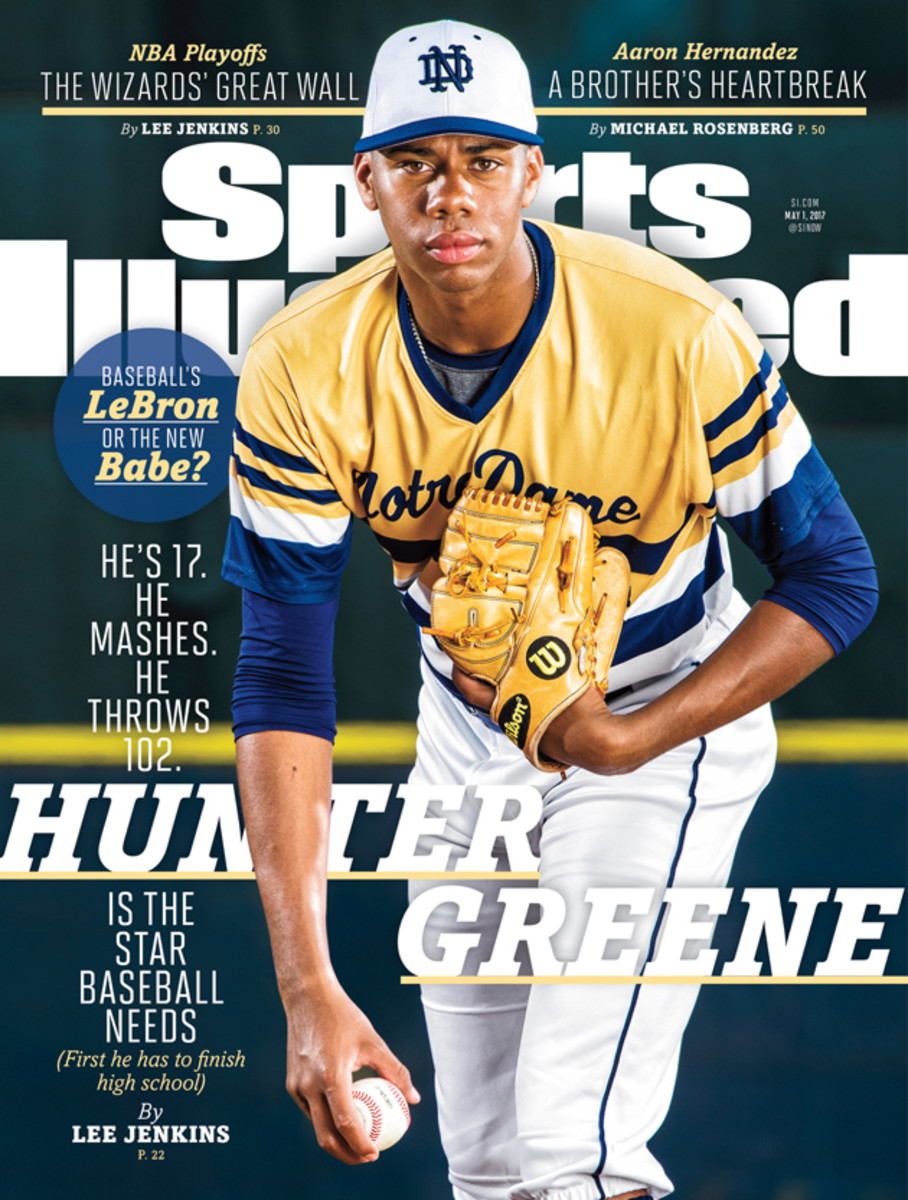
“This is exactly the kind of kid we desperately need,” says one major league official. Greene is African-American, arriving at a time when baseball grapples with a dearth of African-American players. At six he started wearing Jackie Robinson’s number 42. At seven he talked with Dan Rather for a piece on AXS-TV about race and his chosen sport. At 13 he won an essay-writing contest that earned him a meeting with Robinson’s daughter, Sharon. Last year he ate lunch on Ventura Boulevard with pal Dave Winfield to discuss the future of baseball. And last month he threw out the first pitch on Opening Day at Ladera Little League, situated in a predominantly African-American neighborhood. After his speech (“Your children are not being drafted today,” he cautioned the parents. “Ice cream after the game always works”), Greene stood at the bottom of the mound on the Majors field, tears under his Aviators. “I get it,” he said, in reference to the responsibility he is about to inherit.
The African-American talent pool remains a troubling problem for baseball
But before he becomes a face of baseball, he is going to need a position, and on that subject you will find a wide swath of opinions about Christian Hunter Greene. Several scouts agree that he is the best two-way amateur prospect they have ever seen, a first-round pick as a pitcher and a shortstop, with comps to Noah Syndergaard on the mound and Alex Rodriguez in the field. But arms are easier to project than bats, and come June, Greene will likely be drafted No. 1 by the Twins (or No. 2 by the Reds) because he touches 102, commands three pitches and routinely shreds the strings of his catcher’s old Rawlings Gold Glove. Putting him on the hill, and keeping him there, is the safe bet. If all goes as planned, he will crack a big league rotation by 20, and his 33 1⁄2-inch, 30 1⁄2-ounce Marucci will collect dust.
“It’s a no-brainer, right?” says the official. “The guy sits in the upper 90s, throws breaking balls for strikes and fields the position like no other. He’s pick-and-play. That’s the conventional thinking. But I just don’t know if this is the time for conventional thinking. What if Hunter Greene is the freak?”
*****
Why isthat n----- playing shortstop?
Those vile words, spewed by the fossilized grandfather of a nine-year-old teammate, hung in the air over the third-base bleachers at the William S. Hart Pony Baseball complex in Santa Clarita, loud enough for any of the little boys on the left side of the infield to hear. “Hunter heard it,” says his father, Russell. “I heard it. N----- this, n----- that.” Hart is a hardball hotbed located near the Greenes’ home in Stevenson Ranch, 35 miles north of L.A., but Russell vowed that his son would be reared by the city as much as by the suburbs.
In 2006, MLB established its first Urban Youth Academy on 10 emerald acres in a corner of Compton (Calif.) Community College. The Greenes showed up a year later. The academy is open to everyone from everywhere, but the facility is obviously intended for underprivileged kids from South L.A., and Hunter Greene is neither. His mom, Senta, is an educational consultant. His dad is a renowned private investigator who handled Johnnie Cochran’s cases for two decades, starting at the end of the O.J. Simpson murder trial. Russell’s specialty is violent crime—he carries a gun and often arrives at homicide scenes moments after police, snapping pictures—but his clients also include the Kardashians and Kanye West, Justin Bieber and Reggie Bush. When Kanye scraps with a paparazzo at LAX . . . when Justin is extorted for telling racist jokes . . . when a Miami waitress claims Reggie impregnated her . . . when a teenage girl posts photos of Kylie’s makeup line before its release, Russell tells Hunter, “I have to go handle this.” He is not as ruthless as Showtime fixer Ray Donovan, but NBC and CBS have both asked him to star in reality shows.
14 times Sports Illustrated proclaimed a high school athlete the next big thing on the cover
1966: Rick Mount
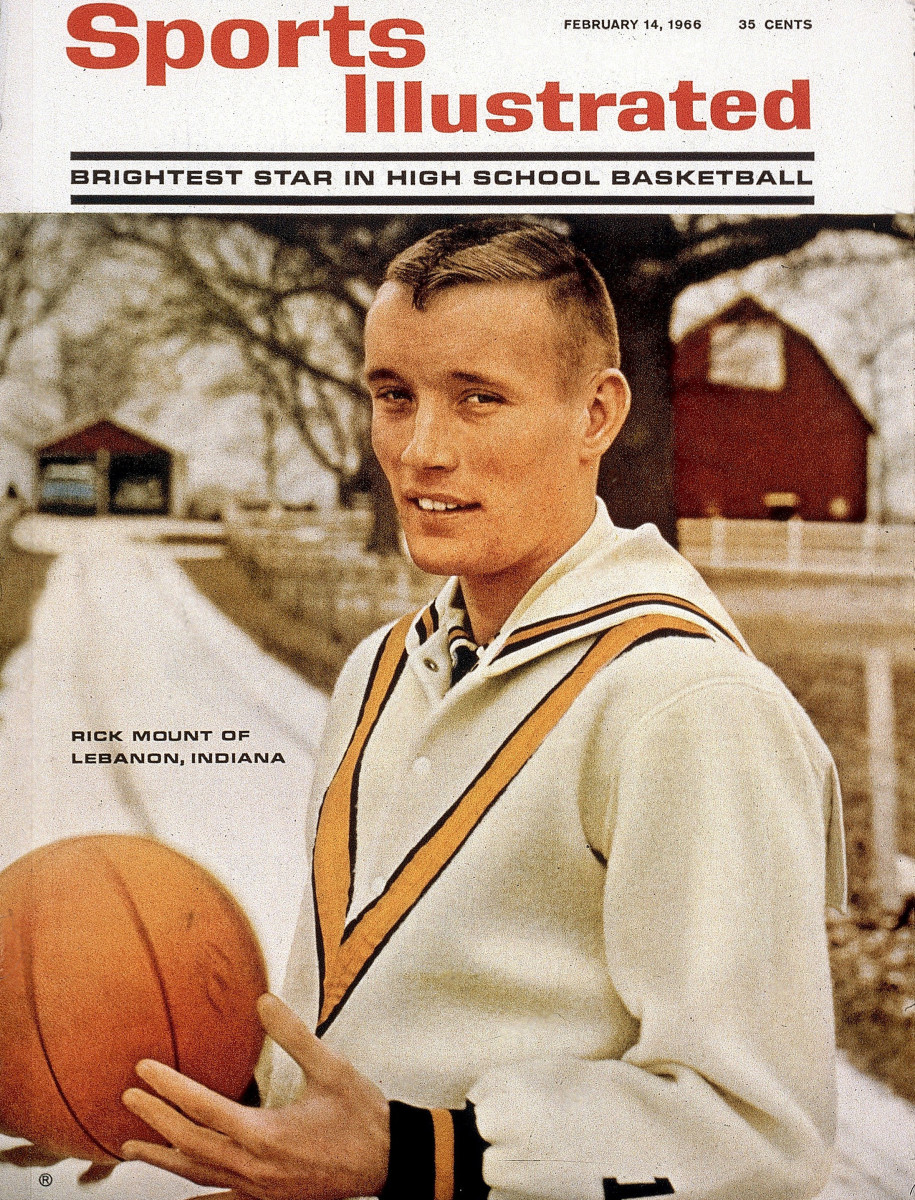
Sports Illustrated looked at Rick Mount, a high school basketball player from small-town Lebanon, Ind., and declared him ready for big things, dubbing him the “brightest star.” The first high school athlete to make it onto the cover of the magazine, Mount went on to play at Purdue before a brief pro career.
1970: Tom McMillen
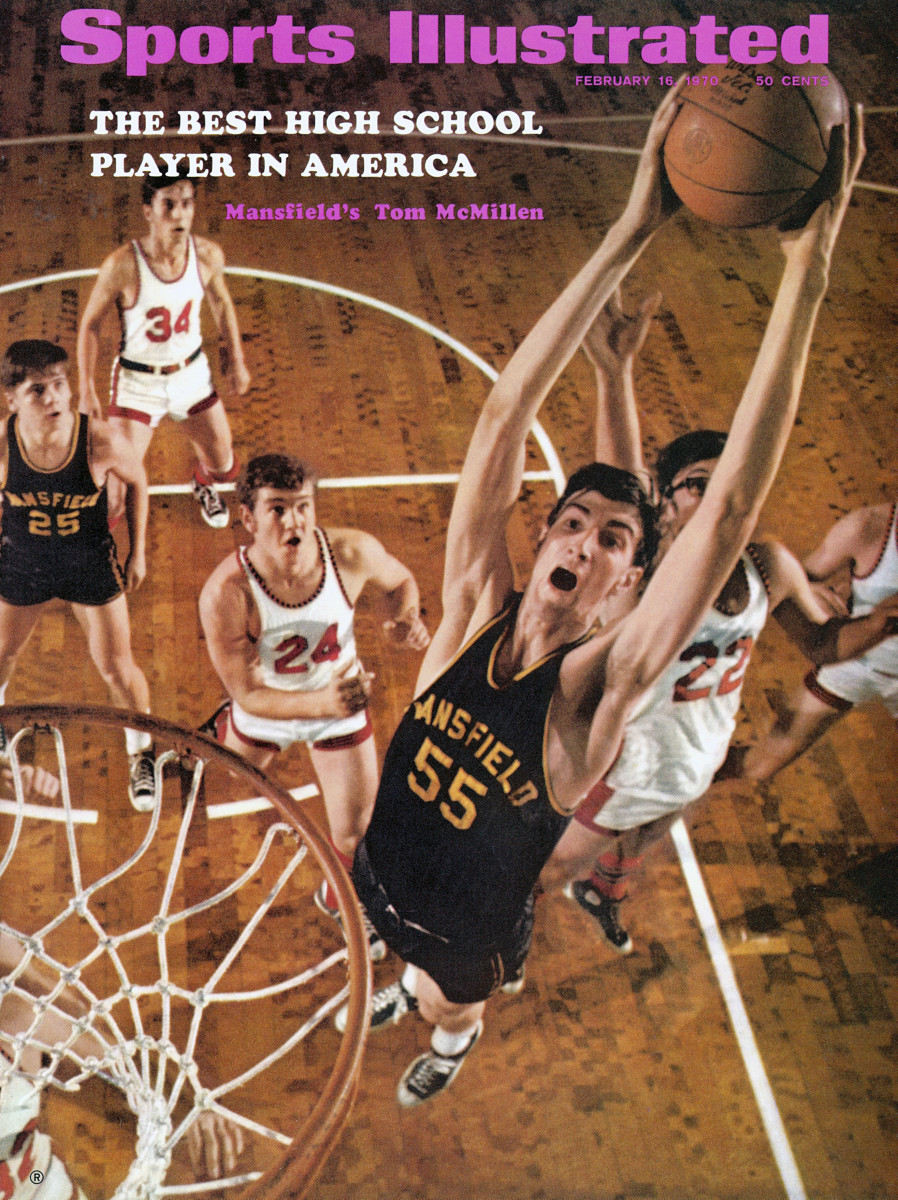
In 1970, Pennsylvania high schooler Tom McMillen was one of the nation’s most highly sought high school recruits—a near seven-footer with aspirations of becoming a doctor. He would later go on to star at Maryland, become a Rhodes Scholar, play in the NBA for 11 seasons and serve in the U.S. Congress, representing Maryland for four terms.
1971: Mike Peterson
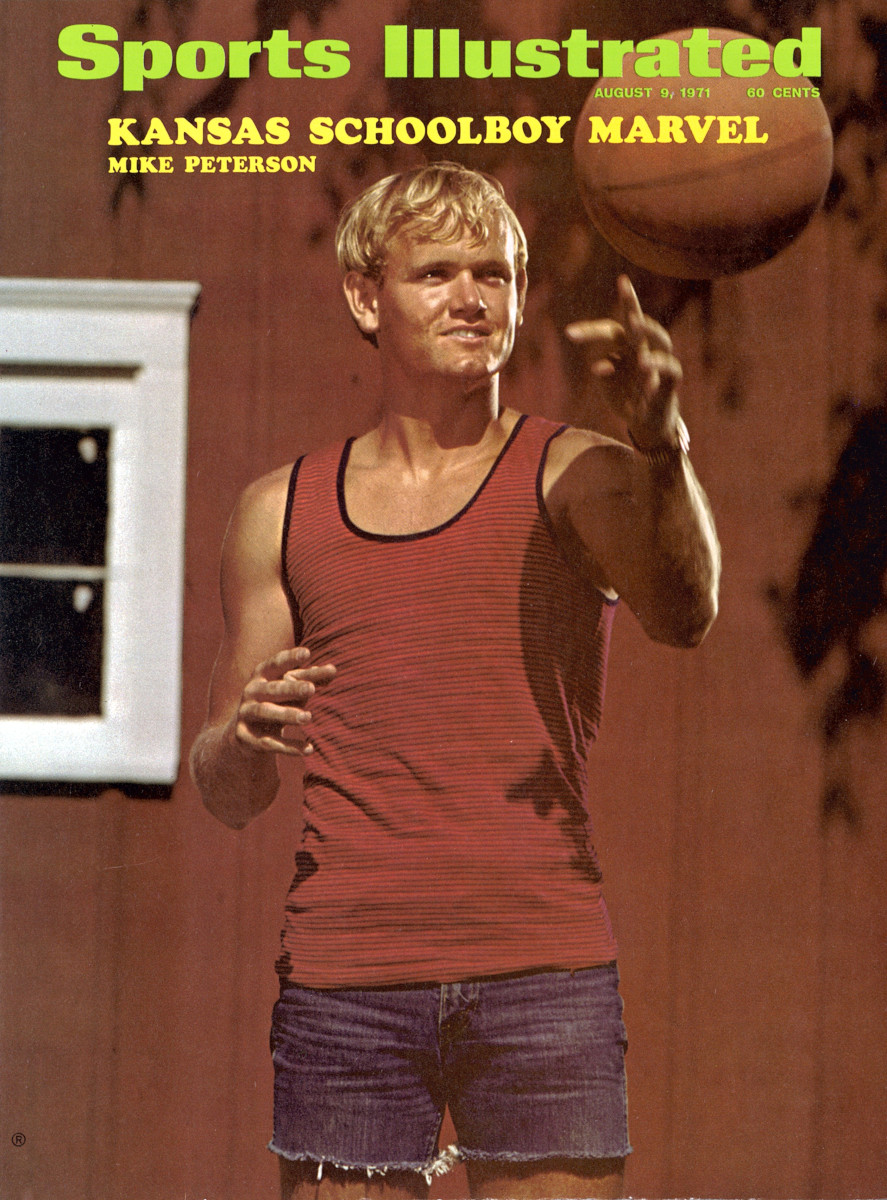
Kansas kid Mike Peterson starred at baseball, football and basketball in high school. He went on to briefly play in an independent baseball league after attending Kansas State Teachers College.
1974: Bruce Hardy
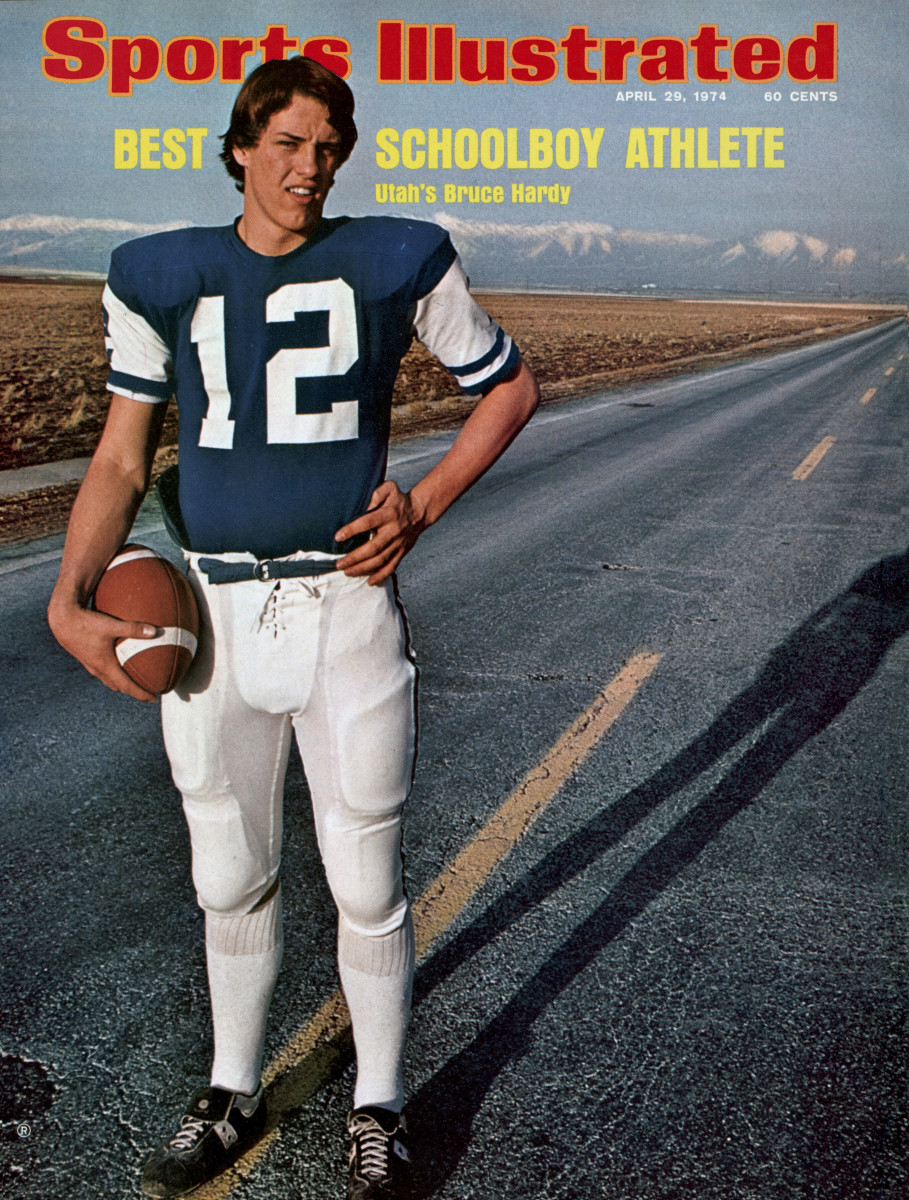
Another All-American, all-around athlete, Bruce Hardy hailed from Murray, Utah, where he played basketball, football and baseball while excelling in the classroom. He decided to play football at Arizona State and proceeded to the NFL, where he spent more than a decade with the Dolphins.
1981: Bobby Carpenter
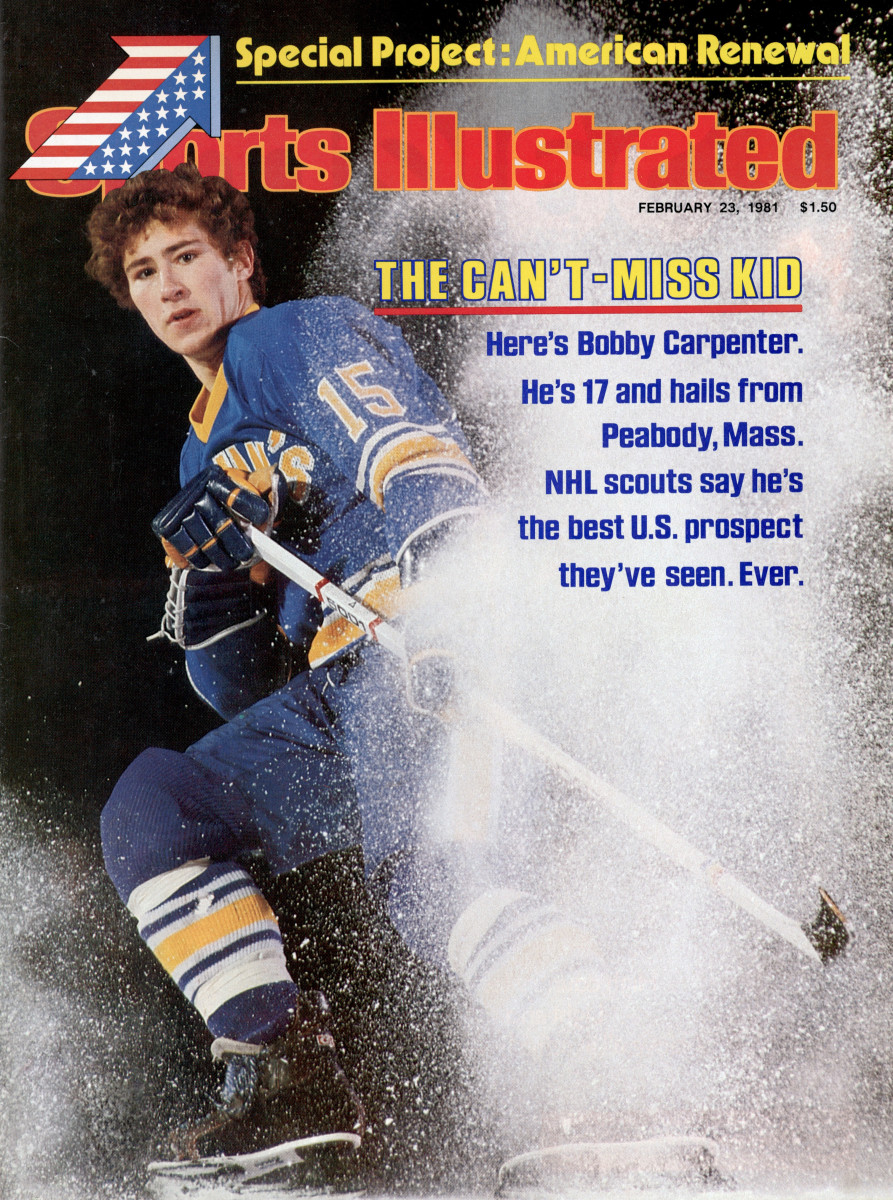
SI anointed Bay Stater Bobby Carpenter the best hockey prospect the U.S. had ever produced. The center was drafted by the Washington Capitals and went on to have a lengthy NHL career spanning nearly two decades, winning a Stanley Cup with the Devils in 1995.
1986: Kristie Phillips
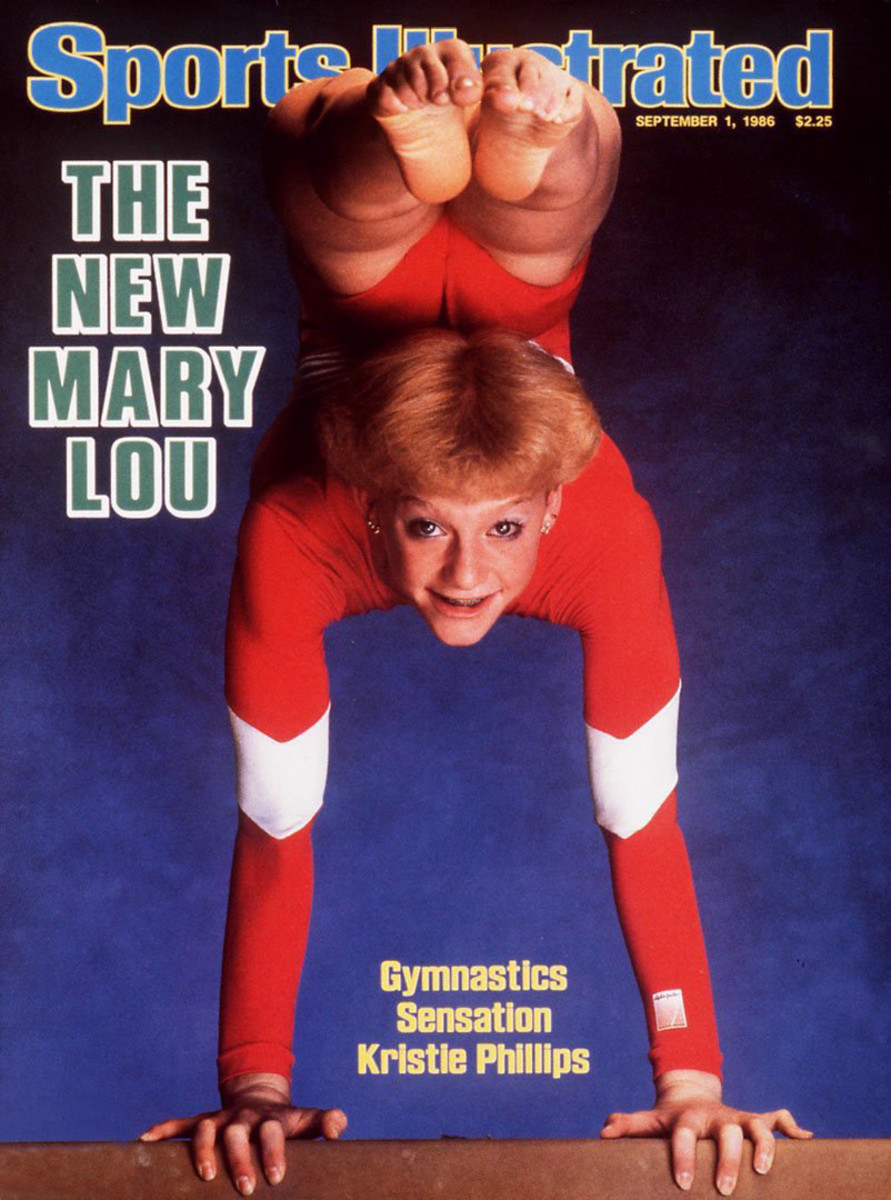
For the first time, Sports Illustrated featured a female high school athlete on its cover, 14-year-old gymnast Kristie Phillips. The two-time national junior champion moved up to the senior ranks in 1987 and was a near sure bet to compete in the ’88 Seoul Olympics. However, injuries and a growth spurt derailed her opes and she did not make the U.S. team. She went on to LSU on a cheerleading scholarship.
1989: Jon Peters
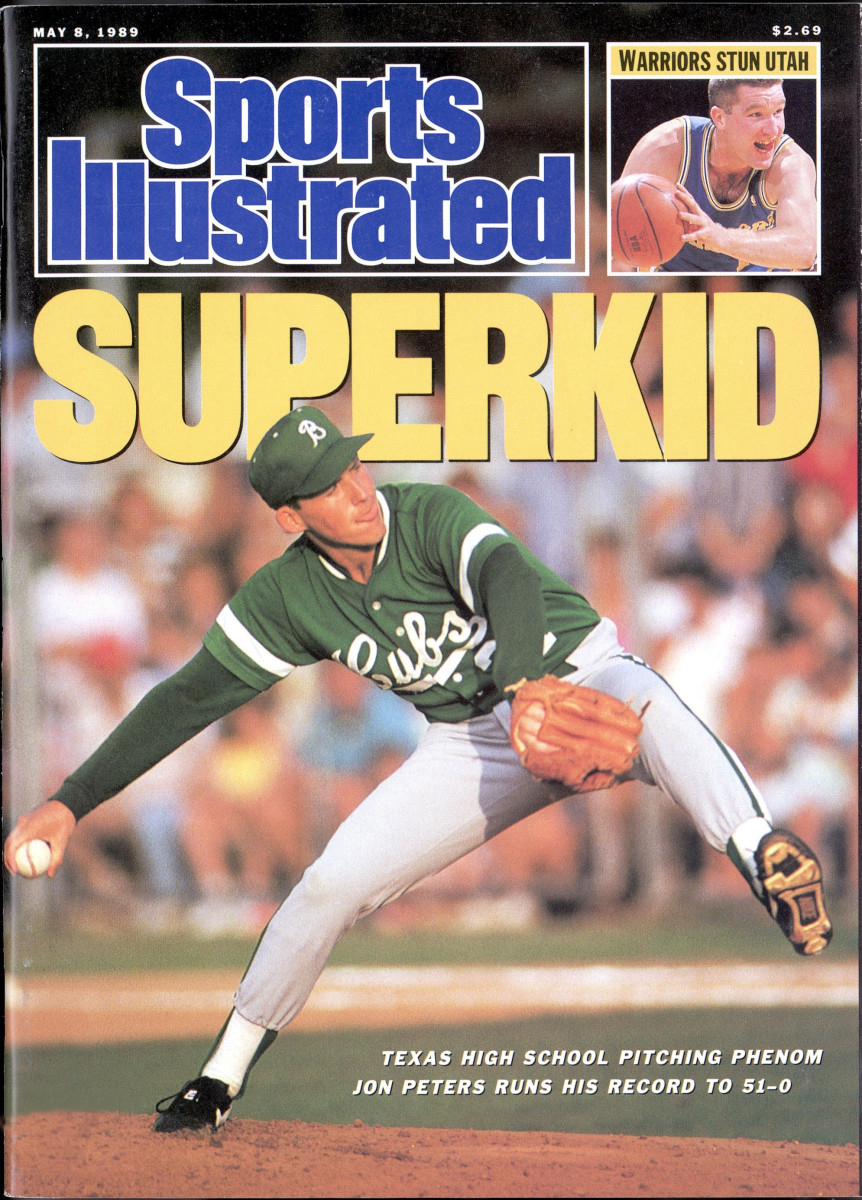
When Jon Peters won a record 51 straight games as a high school pitcher, Sports Illustrated highlighted the 18-year-old from Brenham, Texas. He accepted a scholarship to Texas A&M but four arm surgeries before the age of 21 ended his baseball career.
1995: Kevin Garnett
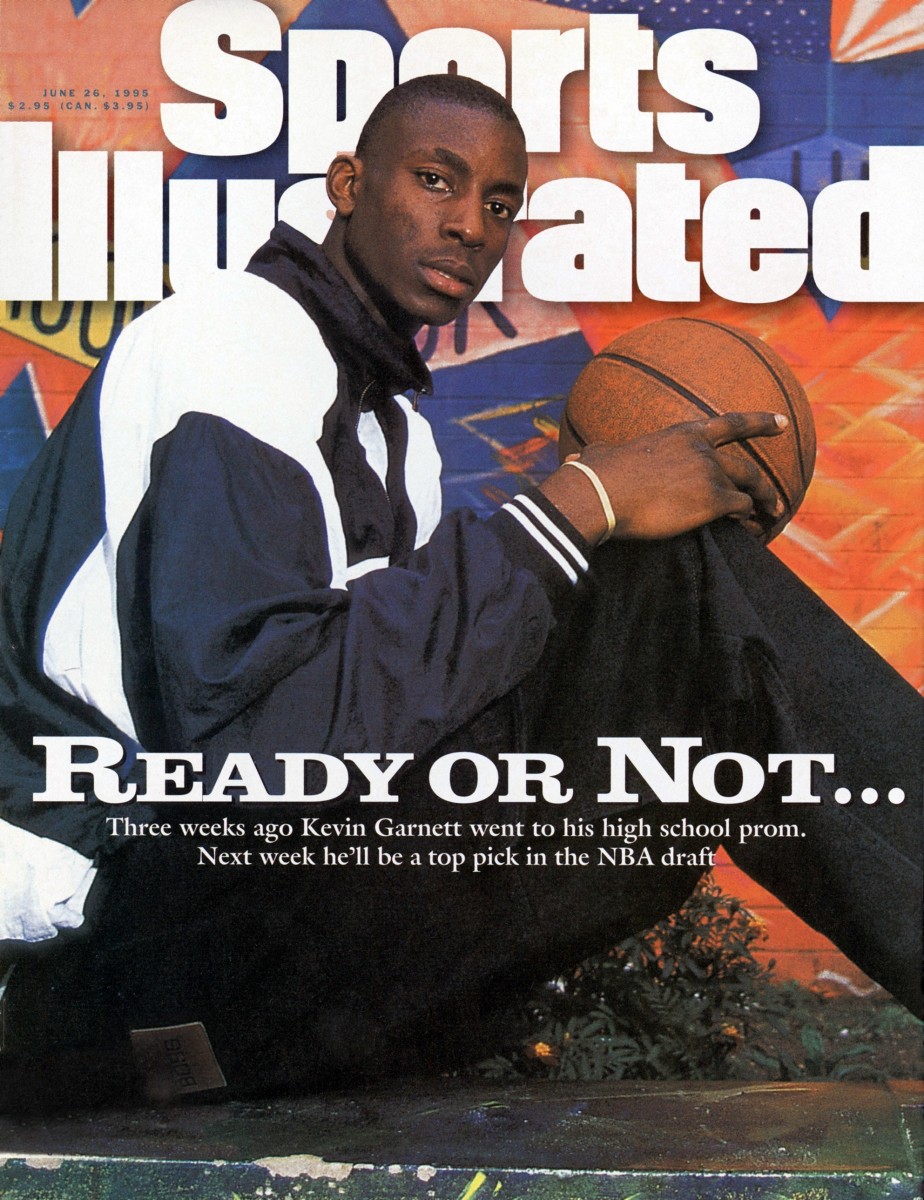
Kevin Garnett made his first appearance on the cover of SI having recently graduated from Farragut Academy in Chicago. It would not be his last. At the time, Garnett had just turned 19 and was a lock to be picked high in the NBA Draft. He later was named NBA MVP in Minnesota, won a title in Boston and was inducted into the Basketball Hall of Fame.
2002: LeBron James
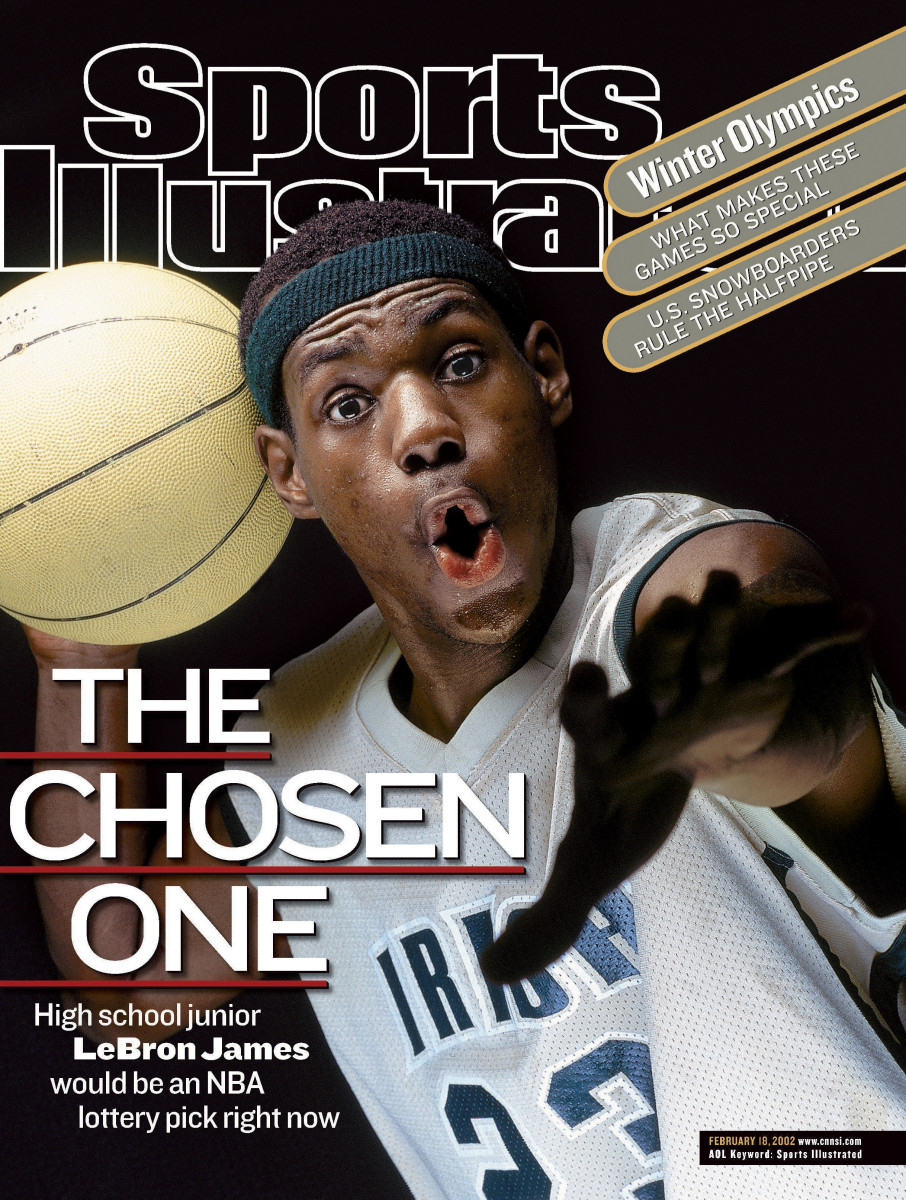
In 2002, LeBron James was a high school phenom at St. Vincent-St. Mary High in Akron, Ohio. He would be selected with the first pick in the NBA draft right out of high school by his hometown Cleveland Cavaliers in 2003 and, well, you know the rest...
2004: Sebastian Telfair
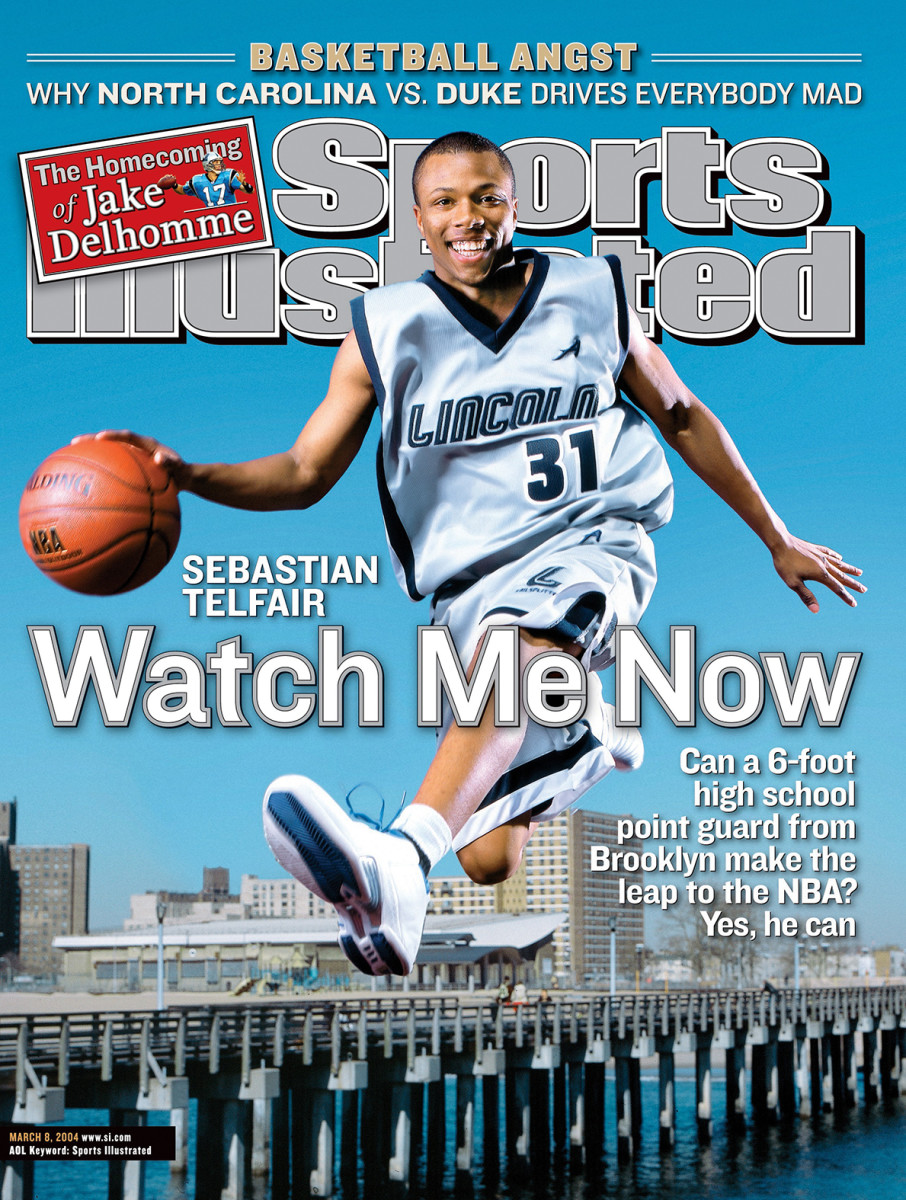
Sebastian Telfair would not have quite the same NBA success as the last high school basketball player to grace the cover of the magazine, but he was still a huge high school superstar as a teenager in New York City. He jumped straight to the NBA, where he played for 10 seasons as a journeyman point guard.
2009: Bryce Harper
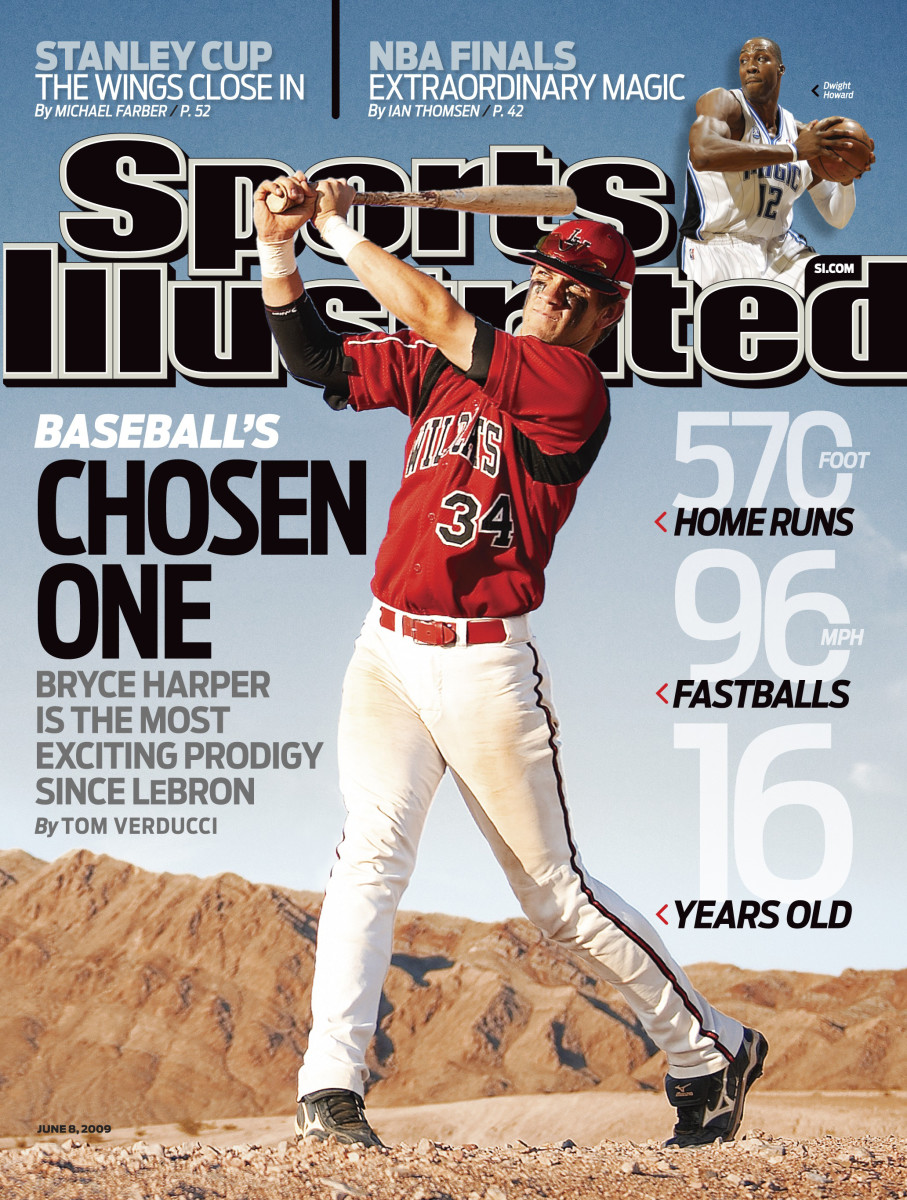
At 16, Bryce Harper was a super-prospect better than A-Rod or Ken Griffey Jr. at the same age. He entered the big leagues three years later, capping off his first season with Rookie of the Year honors, Ten seasons into his MLB career, he had been named an All-Star six times and league MVP twice.
2012: Jabari Parker
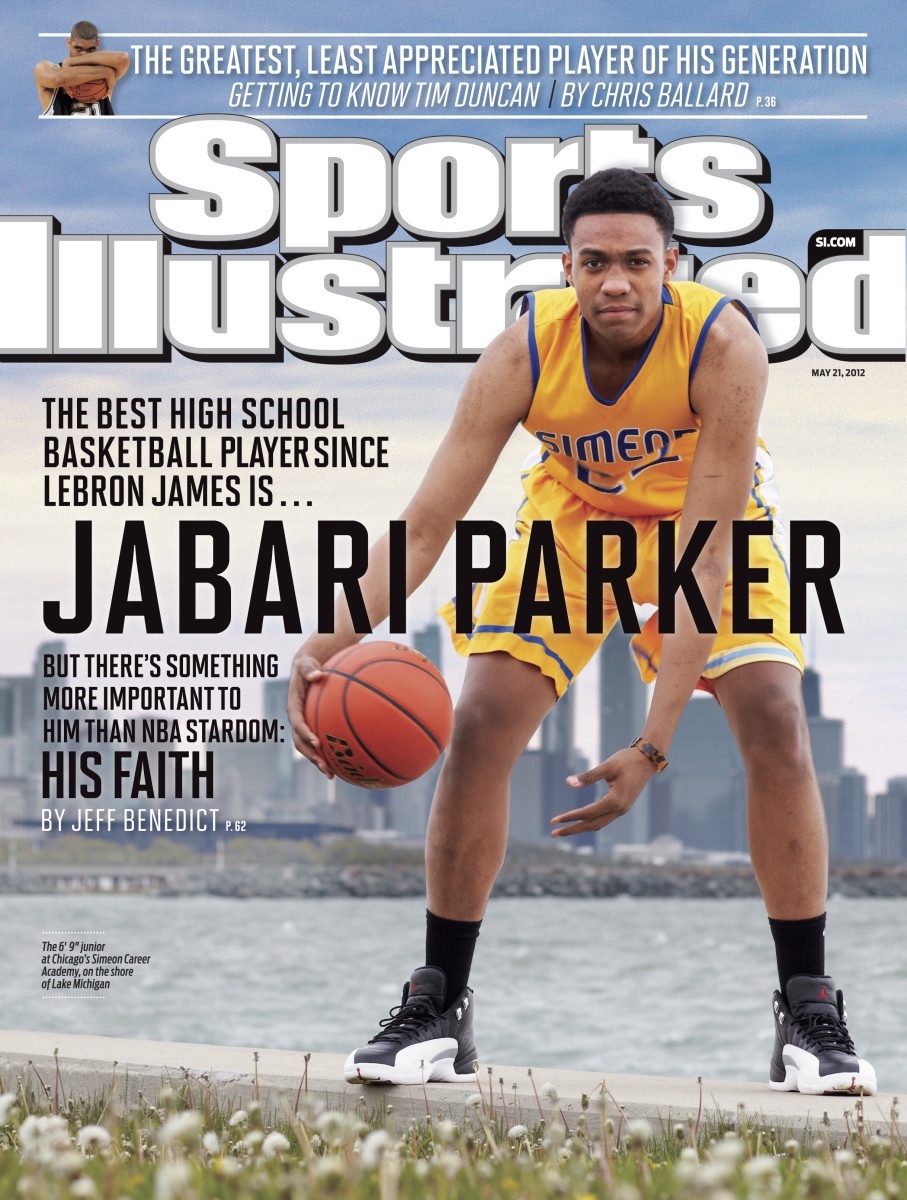
Chicago high school star Jabari Parker gets best “since LeBron" treatment on the cover. He went on to star as a one-and-done at Duke and was the second pick of the 2014 draft, beginning his NBA career with the Bucks. Since a knee injury in early 2017, he has only started 40 games, bouncing through six teams.
2017: Hunter Greene
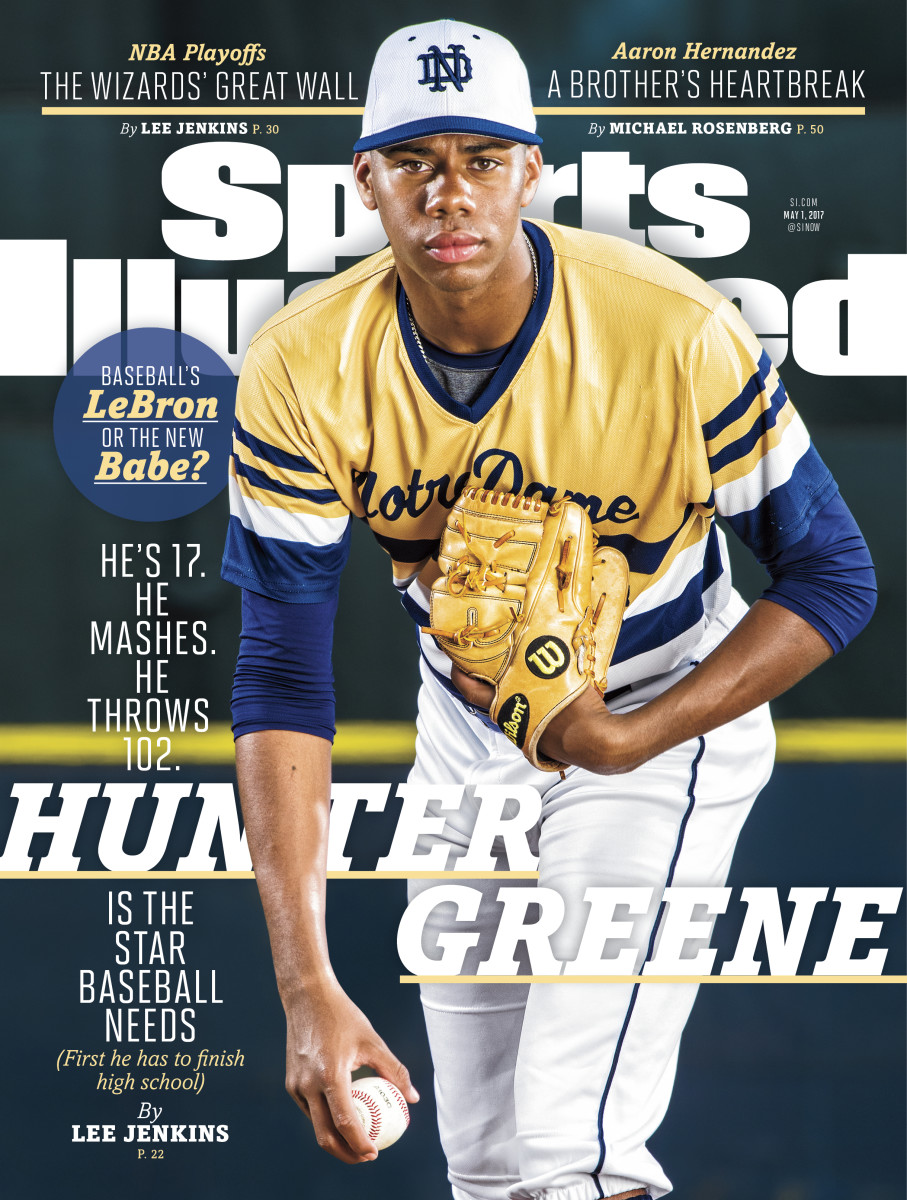
Hard-throwing Hunter Greene landed on SI’s cover a month before being drafted with the second overall pick by the Cincinnati Reds. As a senior at Notre Dame High in Sherman Oaks, Calif., Greene’s fastball reached up 102 mph. Greene represented the Reds at the MLB All-Star Futures Game in 2018 but had his career slightly derailed after having undergone Tommy John surgery shortly thereafter.
2019: Emoni Bates
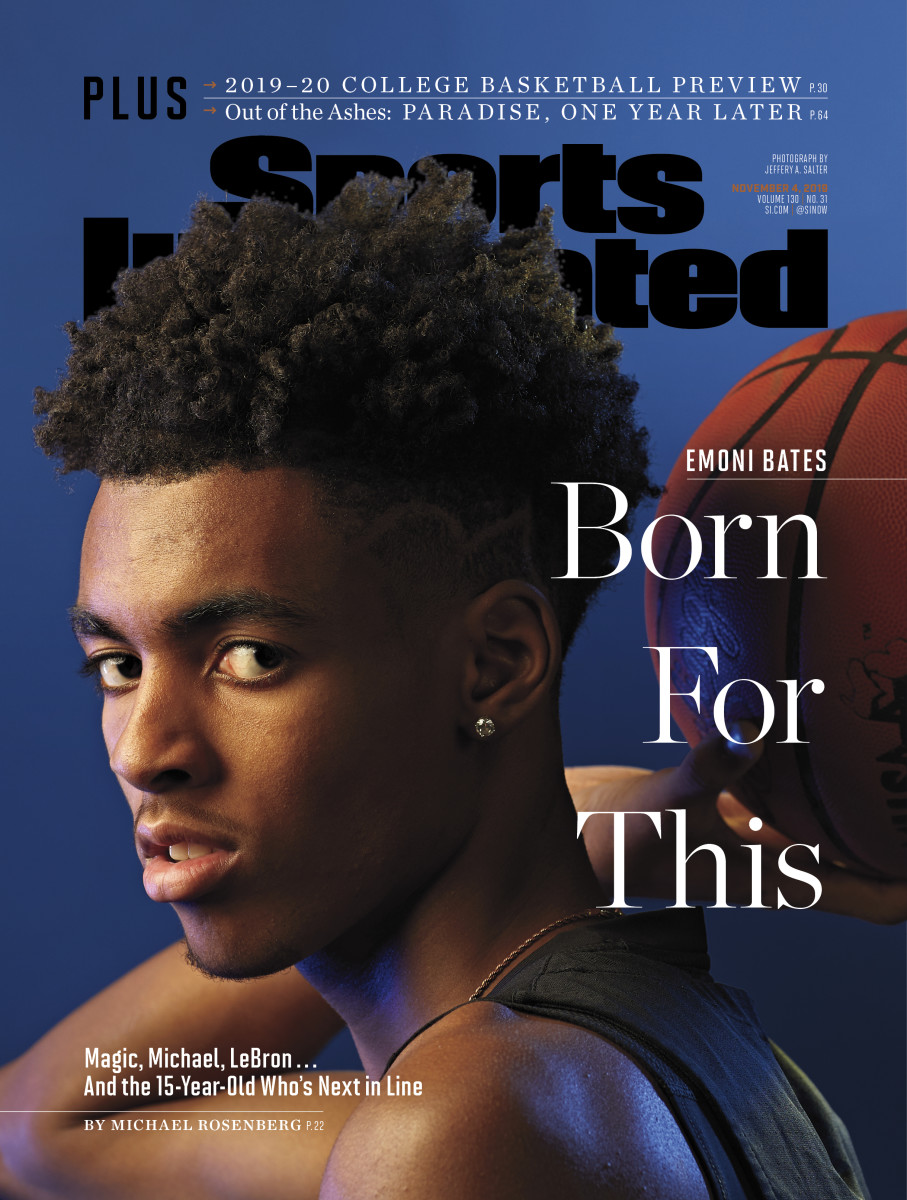
Not yet old enough to drive, Emoni Bates steered Ypsilanti High to a Michigan state title as a freshman. The next season the 6' 9" forward landed on SI’s cover. Emoni’s father agreed to the shoot figuring that national attention was coming and his son should learn to deal with it. Emoni had his own motivation: LeBron James had first appeared on the cover as a high school junior and Emoni would get there faster. Looks like his dad was right: Emoni won Gatorade national player of the year honors as a sophomore. Heading into his senior year, he reclassified, graduated early and enrolled at Memphis as the presumptive No. 1 pick of the 2023 NBA draft.
Three times a week Russell fetched Hunter early from Stevenson Ranch elementary school and drove him an hour south to Compton, traversing L.A.’s spiderweb of freeways, from the 5 to the 60 to the 710 to the 91. At the academy, Hunter hit with former Dodger centerfielder Ken Landreaux. He fielded with former White Sox third baseman Lorenzo Gray. He pitched with former MLB executive Jimmie Lee Solomon. He occasionally ran the bases with his favorite player, speedster Juan Pierre. “Those guys worked with all our 12-year-olds,” says Darrell Miller, the academy director. “And with Hunter.” He was seven. Upon completing second grade, he applied for Alan Jaeger’s weeklong summer camp at Pierce College in Woodland Hills, typically populated by high school pitchers. Jaeger, a sensei for many of L.A.’s most promising young hurlers, oversees four-hour sessions in which 3 1⁄2 hours are devoted to stretches, yoga poses, breathing exercises and band work. “We only throw for 30 minutes,” Jaeger explains. “It’s not for a seven-year-old.” He accepted Hunter, on one condition. He’d refund Russell’s money after the boy inevitably lost interest the first day. “That never happened,” Jaeger laughs. “Hunter was so unusual. Even then, he had this deep connection with his body and his breath. He listened to his arm.”
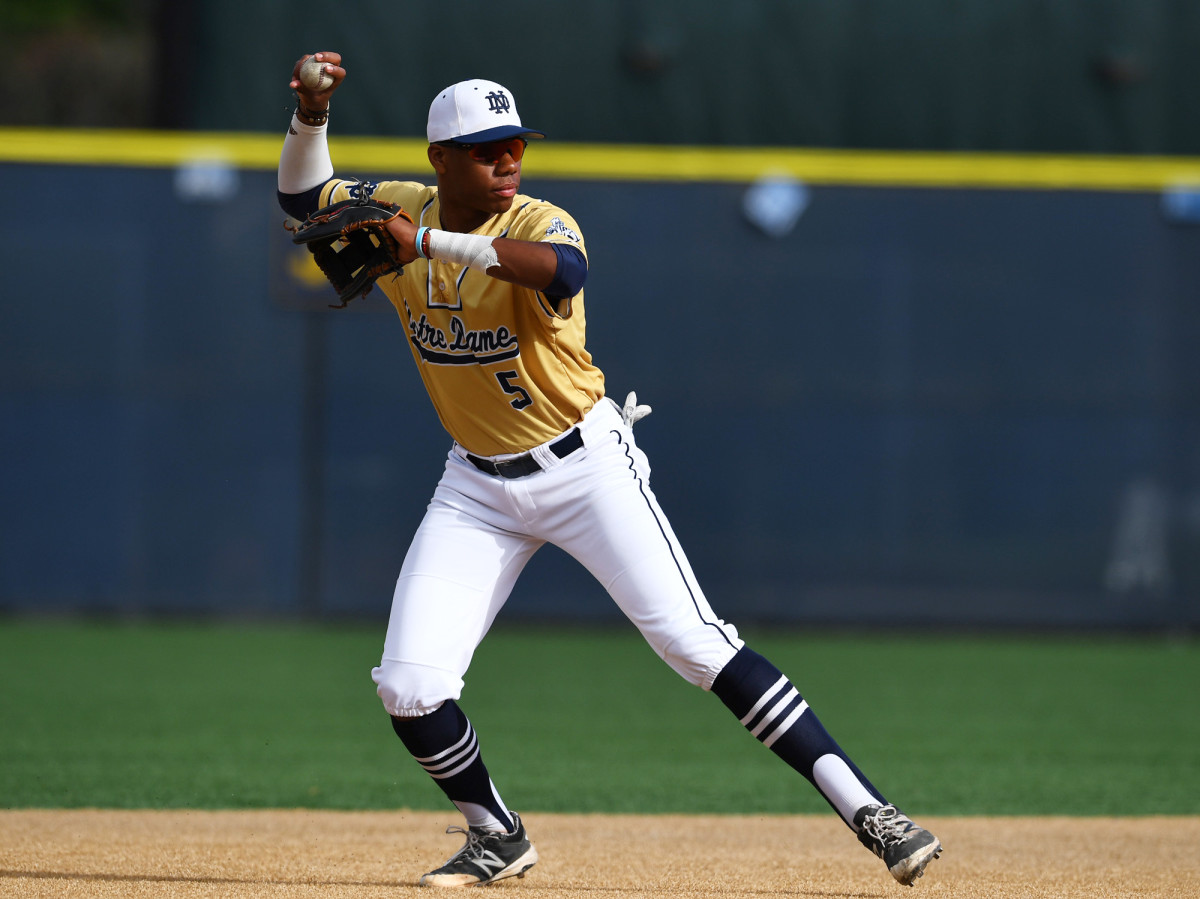
Greene started playing year-round travel baseball at eight, for two teams, and he always used a beige Rawlings Pro Preferred glove (retail value: $359.99). He never considered another organized sport. He flew with his team to Omaha when he was nine; Florida, South Carolina and New York when he was 10; Ecuador when he was 12. He framed on his bedroom wall the pins he collected from opposing clubs at far-flung tournaments. There are concerns over travel ball in warm-weather locales—burnout and overuse top the list—and many fears are well-founded. But Greene strove to be a specialized counterpoint, logging an estimated 70 games a year, and preparing his arm for each one with Jaeger’s prescribed regimen of band work and long toss. “You’re never totally comfortable drafting a high-schooler first,” says a major league scouting director. “But you’re more comfortable with this one because of how long and how carefully he’s tracked toward it.”
The 30: Nationals grab the top spot, Giants plummet toward the abyss
As kids, the best players are invariably shortstops and pitchers, until the talent pool rises, pushing them in one direction or the other. The debate over Greene’s eventual position began when he was about 10, splitting time with two prominent clubs in the San Fernando Valley: Pacific Baseball Academy, coached by P.C. Shaw, and the Braves, by Gus Rico. “I viewed Hunter as a shortstop,” Rico recalls. “Then I’d talk to P.C. and he thought he’d be a pitcher.” Shaw, who has coached more than 25 major leaguers as amateurs, couldn’t possibly know whether he’d found another. But he recognized a baby-faced phenomenon when he saw one. Greene had huge feet and downy hands, pro actions and demeanor, plus a community from Compton to Castaic intent on burnishing his star. “Shoot for the moon,” Russell would tell his son, relaying the story about the first time he marched into Cochran’s office above Highland Boulevard, carrying beer steins stocked with See’s Candies sugar sticks to grease the secretaries. “Wherever you land is good enough.”
Hunter Greene had it all, at 11, and then he didn’t even have a bed to sleep in.
*****
The Kings played the Flames at Staples Center on Dec. 9, 2010, and Hunter ushered his five-year-old sister, Libriti, through the metal detector. “Her sleeve was up,” Greene remembers, “and I saw she had a couple splotches on her arm.” He assumed she’d been hit by a stray ball at kindergarten recess. Then, during the game, he noticed similar splotches on the other arm and alerted his parents. The next day Libriti was diagnosed with leukemia.
For most of the following two years Libriti lived in a corner room across from the janitor’s closet on the fifth floor at Kaiser Permanente Medical Center in Hollywood, which meant Hunter lived there also. Sometimes he slept on the pull-out, sometimes on the floor, sometimes on two chairs facing each other. When Libriti grew weary of all the shots, he climbed in her bed. They played sports on the Wii, watched iCarly on Nickelodeon, ate macaroni and cheese. They threw flashlight parties in the dark—making the light dance across the empty walls—and put surgical masks over their ears to impersonate Mickey Mouse. They nicknamed Libriti’s IV pole Jackie. Hunter dressed for school in that room, did his homework there, peeled off his dirt-stained uniform and showered there. “On weekends I’d go straight from the hospital to some tournament in Orange County or San Diego,” he recalls. “I was doing all these cool things, having all this success, and I’d talk about it on the car ride back with my dad. But as soon as you park at that hospital, it’s over.”
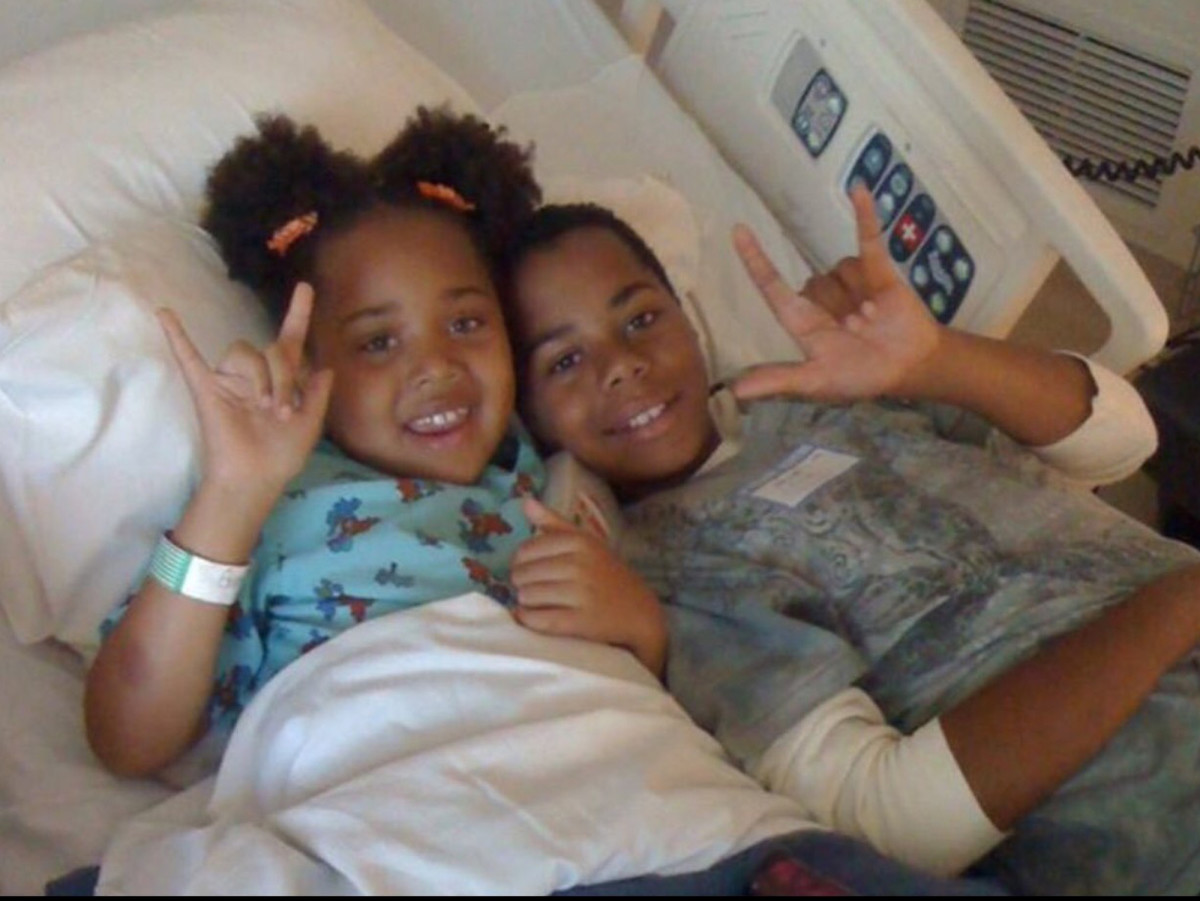
Here is where Hunter Greene’s story deviates from so many other prodigies’ bios. In the years his profile swelled, as he morphed from a precocious child into a prized prospect, he batted second in his own household. Of course, his family deconstructed every inning, but then they turned their attention to a 20th bone marrow transplant, a 19th medication, a fifth surgery. “You’re living every parent’s greatest dream,” says Senta, “and every parent’s worst nightmare. And you’re doing it simultaneously.” She delivered her youngest child, Ethan, on the fourth floor at Kaiser—while Libriti was undergoing chemotherapy on the fifth. While Senta taught Libriti to read and write, Russell was her TA, having lost numerous clients who stopped calling when informed of his daughter’s condition.
Four years after the Kings beat the Flames, and two years after Libriti walked out of Kaiser and onto Sunset Boulevard in her fuzzy Ugg boots, her disease went into remission. She can finally watch Hunty, as she calls him, play ball without wearing a mask. Now in sixth grade at Stevenson Ranch, Libriti wants to open a clothing store and has assembled a portfolio of her designs, featuring lots of bomber jackets and ripped jeans. She is not shy, and when she cracks jokes about the ordeal she just survived, her brother bows his head as he listens. “She makes me think about everything God gave me,” Hunter says, “and reminds me I can’t take any of it for granted.”
When his application for seventh grade was rejected by Harvard-Westlake, an exclusive private school, Hunter wiped away his tears and took up Korean so he’d never be confused for a dumb ballplayer. When scouts snarked at his marginal speed, he enrolled at The Factory training center in Van Nuys, where he still performs plyometrics every day after practice. And when Libriti came home from Kaiser, he returned to the hospital over the holidays, preparing meals at Thanksgiving and wrapping presents at Christmas. “I liked seeing families that were like our family,” Hunter says, “telling our story and hearing their story.”
To do it all, he woke up every school day at 5:45, commuted one hour each way to Notre Dame and didn’t finish homework until after midnight. He took on too much. As a sophomore, his grade point average dropped to 2.7 and his parents fretted that he’d lose his UCLA scholarship. “Clean out your locker,” Russell told him one morning, parked in front of campus. Russell had arranged for Hunter to transfer to Chatsworth High, another baseball power with more relaxed academics. Hunter complied, tossing his gear into the back of his dad’s Chrysler, but he couldn’t bring himself to walk back into Notre Dame and sign the paperwork. “This isn’t good for you,” Russell told him. “It’s not the right school for you.” “I can’t leave,” Hunter replied. “I want the diploma from here.” He didn’t earn straight A’s that semester, or the next one, but he steadily pushed his GPA above 3.0.
This spring representatives from nearly every franchise have descended upon the Greene residence, a well-appointed two-story home on a quiet street with the Chrysler parked out front. They meet Libriti. They admire Hunter’s artwork in the living room. They talk about what position he’ll play at the next level. Most view him as a pitcher, but some are torn, toying with the idea of at least starting him in the minor leagues as a shortstop. He carries his own insurance policy: If he hits .220 in rookie ball, he can move straight to the mound. In terms of development, there’s far less risk associated with pitchers than hitters. In terms of injury, there’s far more.
Greene, as seasoned as some big leaguers, diplomatically states that he will do whatever his future employer wants. But when you ask what he wants—where on the diamond he extracts the most joy—a rebel smile creeps across his face. “It would be sweet,” he says, clutching a bat Ken Griffey Jr. once gave him, “to do both.”
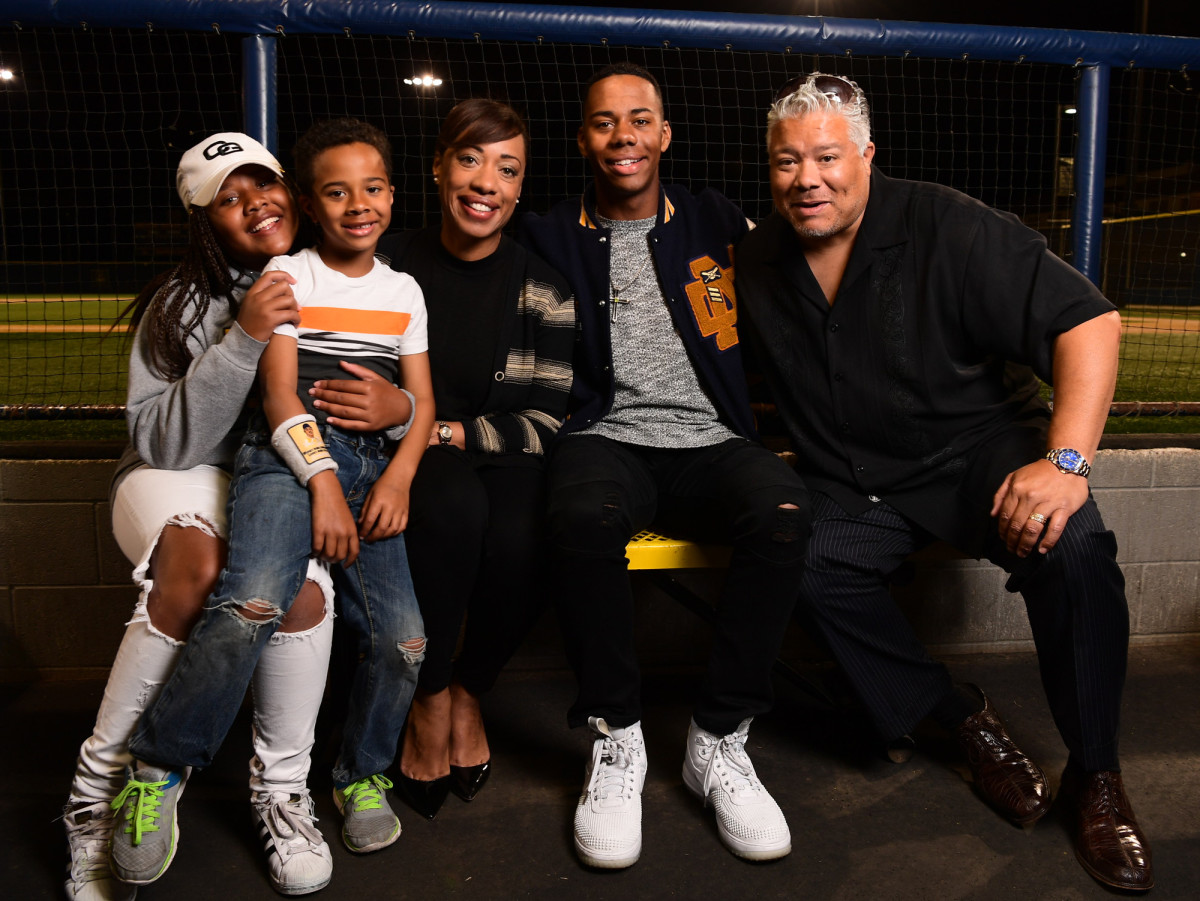
*****
One wayor another, Hunter Greene is probably on the precipice of history, either as the first righthanded high school pitcher ever taken with the top pick, or something else entirely. “I’m not sure what that would even look like,” says an executive with a team selecting early in the upcoming draft. “But I do think it’s worth having the conversation.” Front offices are already in the midst of similar discussions about another tantalizing two-way star, Japanese sensation Shohei Ohtani, starting pitcher and designated hitter for the Nippon Ham Fighters. But Greene’s glove introduces another element. According to Jaeger, an arm-care expert who has consulted for eight organizations, trying to pitch and play shortstop in the pros is borderline dangerous. “There’s a cycle of starting pitching that requires a five-day regimen of recovery and buildup,” Jaeger explains. “You can’t just go out there the day after you pitch, or the next day, and throw across a field with aggression. But I’ll tell you what is possible for someone like this: He could be a closer and a DH, and he could do that very safely.”
Forget Micah Owings and Brooks Kieschnick, two-way guinea pigs. Imagine another Aroldis Chapman, bashing 25 homers a year. But at DH you’re losing Greene’s defense, and in the bullpen you’re losing all those quality innings. “It’s a dilemma,” says the MLB exec. By definition, though, a dilemma is a choice between undesirable alternatives. This is the Dom Perignon of baseball problems. “I know enough to know that if a guy throws 100 mph he should be a pitcher,” says Dill, the Notre Dame coach. “But I’m really glad I’m not the one who has to make that decision. Because whatever he does, we’re all going to wonder what could have been.”
In L.A.’s hypercompetitive Mission League, teams play three-game series every Tuesday, Wednesday and Friday. Normally, an ace works Tuesday and a No. 2 on Wednesday, but Dill uses Greene at shortstop those days so he can prep Thursday, pitch Friday and recover Saturday. By Sunday, he is long-tossing on a football filed at Richard Rioux Park in Stevenson Ranch with Justin Rorick, his catcher since he was 10. “He throws end zone to end zone, 100 yards, on a line,” Rorick says. “That’s more impressive to me than the 102.” When they finish, they like to hit up auto dealerships and test drive cars they can’t yet buy.
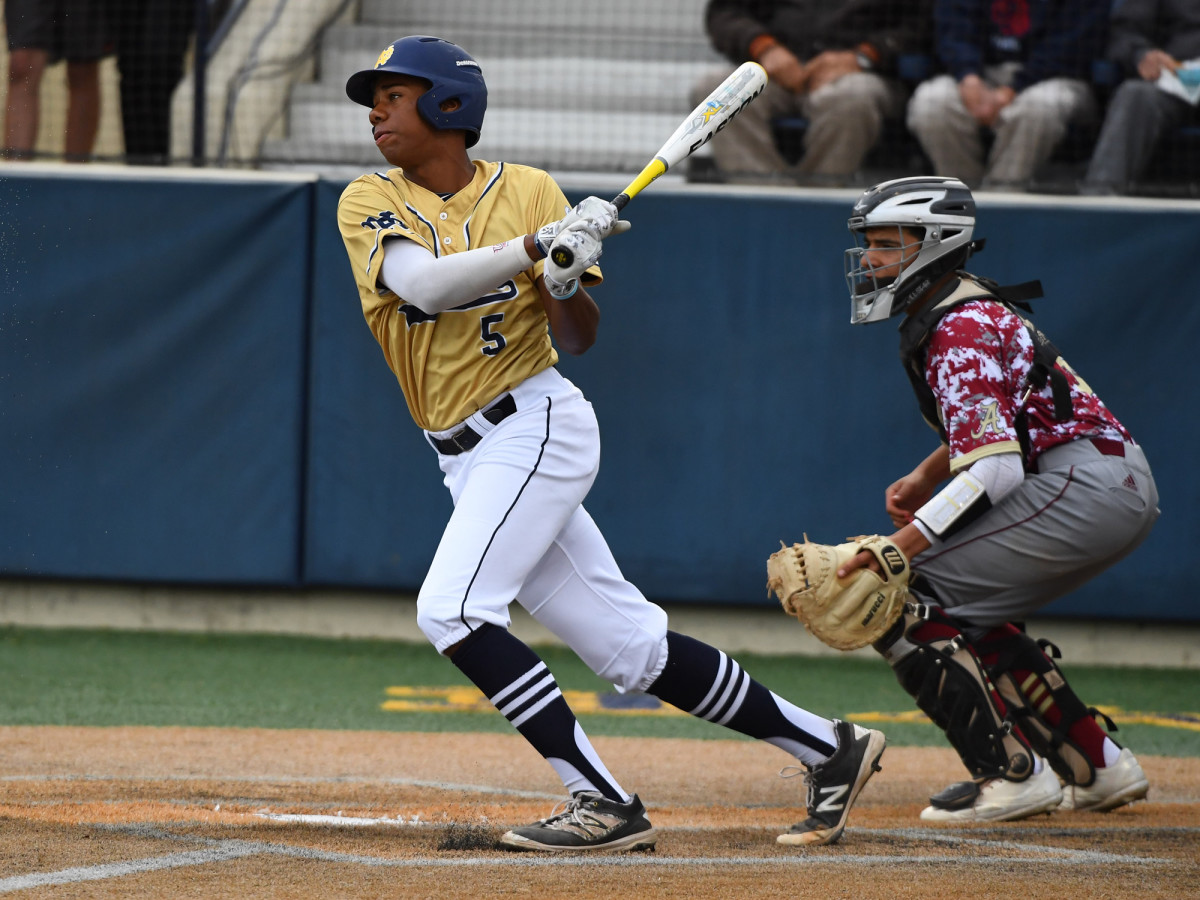
On the third week of March, Notre Dame plays a series against Loyola High. In Game 1, Greene sends a fastball over the fence and onto the gridiron, hit so hard the leftfielder does not move. In Game 2, he throws out one runner at home from shallow center and another at first from the hole between short and third, with what looks like a wrist flick. “That’s a big league shortstop,” says a rival coach. In Game 3, he takes the mound under a pink-and-purple sunset, L.A.’s version of Friday Night Lights. Both berms are packed. Scouts behind home plate joke that they should be awarded frequent-flier points for all their treks to Sherman Oaks. Boys sitting in the aisles wear Mims wristbands emblazoned with Greene’s portrait. Mims traditionally makes its iconic bands for major league stars, not heady high school prospects.
Greene allows two hits in four scoreless innings, his fastball touching 100 and dipping no lower than 95. The Loyola cleanup hitter, Kevin Parada, prepares for each at bat by choking up all the way to the metal. “I’ve never choked up this high in my life,” Parada laughs. The cartoonish grip works as the freshman slaps Greene’s four-seamer to left. Parada wonders if he can keep the ball. He has to settle for a post-game handshake, waiting in the dark outside the Knights’ varsity clubhouse until Greene finishes signing autographs. Loyola has lost 6–1, but Parada beams as he regales his buddies with details of the 100 mph heater he turned on.
“In 20 years,” Parada says, “I’ll tell my kids that I got a hit off Hunter Greene.”
